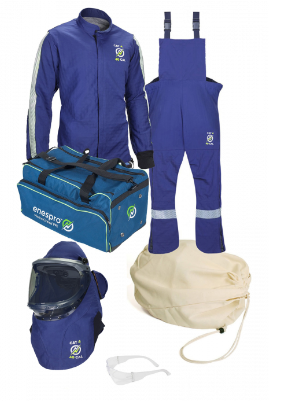Personal Protective Equipment (PPE) holds utmost importance across industries, particularly in construction due to its inherent risks. It's imperative for construction companies to enforce the consistent use of appropriate PPE, conduct regular inspections, and mandate its usage to safeguard workers. PPE stands as a cornerstone for ensuring construction worker safety, providing a crucial line of defense against potential accidents when other preventive measures fall short.
Safety is paramount for every worker, especially in high-risk environments like construction sites where the absence or improper utilization of PPE escalates the likelihood of accidents. PPE comprises a spectrum of equipment designed to shield workers from job-related hazards, spanning from slippery surfaces to falling debris. Key components of PPE encompass eye protection, helmets, high-visibility clothing, footwear, safety harnesses, and respiratory protective gear.
When envisioning the typical attire of construction personnel, safety glasses, reflective vests, and hard hats immediately come to mind. However, these items are not mere accessories; they form the frontline defense in ensuring workplace safety and constitute indispensable safety equipment. Understanding the purpose, necessity, and correct usage of personal protective gear is paramount in enhancing employee safety and minimizing occupational hazards.
Recent emphasis on PPE, particularly in healthcare amid the COVID-19 pandemic, highlights its critical role in protecting individuals and preventing the spread of infectious diseases. However, its significance in construction has always been pivotal, emphasizing the need for comprehensive training as part of any formal PPE program to ensure proper equipment operation and worker safety.
What exactly is PPE? It encompasses a broad array of equipment worn to mitigate risks and dangers at the workplace, with construction being one of the primary sectors utilizing such gear. This includes eye protection, respiratory gear, hearing protection, helmets, and various types of protective clothing designed to safeguard workers from diverse hazards.
Outlined below are the six primary types of PPE:
- Skin Protection: Shields against chemical, biological, and physical hazards, including gloves, work boots, face shields, and protective jackets.
- Eye Protection: Safeguards against airborne particles and chemical interactions, featuring safety glasses and goggles.
- Hearing Protection: Crucial in noisy environments, such as earmuffs or earplugs.
- Respiratory Protection: Shields against inhaling toxic air, with options like gas masks and oxygen masks.
- Head Protection: Predominantly helmets and caps, extensively used in construction.
- Protective Clothing: Utilized to maximize wearer safety, including high visibility garments, lab coats, and work shoes.
The importance of PPE in construction cannot be overstated. Despite its significance, the industry witnesses numerous accidents annually, underscoring the need for effective risk mitigation strategies. Integrating PPE into workplace practices not only reduces injuries but also enhances productivity and customer satisfaction, emphasizing its pivotal role in construction safety protocols.
Adhering to regulations governing PPE usage is paramount for employers. Ensuring provision, compatibility, assessment, maintenance, storage, training, and reporting of defective equipment are integral components mandated by law to mitigate workplace hazards effectively.
OSHA regulations mandate the use of personal protective equipment to minimize workplace accidents and injuries. Adherence to these guidelines significantly reduces the risk of fatalities or severe injuries, emphasizing the importance of compliance with OSHA standards within the workplace.
PPE extends beyond physical protection; it encompasses respiratory, fall, and visibility protection, addressing a myriad of construction site hazards. Workers must utilize PPE to mitigate risks inherent in construction work, ranging from electrical hazards to falls, ultimately safeguarding against potential fatalities and severe injuries.
In conclusion, the risks inherent in construction work necessitate the meticulous use of PPE to ensure worker safety. Employers must prioritize safety by enforcing proper PPE usage, conducting regular inspections, and providing comprehensive training to mitigate occupational hazards effectively. PPE serves as a vital safeguard against accidents, underscoring its indispensable role in construction site safety protocols.
About Werner Protective:
Werner Protective aims to establish itself as a premier provider of safety solutions for construction, mining, and metalworks industries. Our mission-driven service prioritizes relationship-building to cater to your specific needs. Discover exclusive access to top-rated safety equipment from reputable manufacturers. Ensure compliance with regulations by investing in our range of personal protective clothing and supplies. We're dedicated to delivering comfortable and effective protective gear for optimal worker safety. ake sure to check out all of our Arc Flash products at WernerProtective.com and please give us a call (847) 860-7169 or send us an email at (info@wernerprotective.com) for any additional information.


